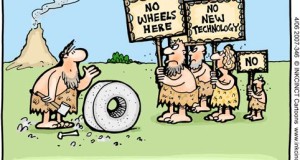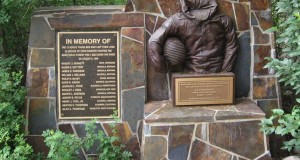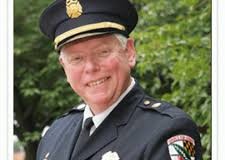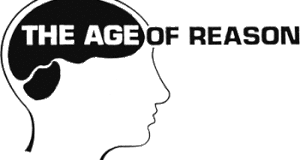The necessary changes in the way that fire departments operate to reduce firefighter deaths and injuries continues to move at a "glacial pace." How long before we really change our safety behaviors?
Read More »Tag Archives: thought leadership
Resistance to Change in the Fire Service
Let me introduce you to the “sacred cow” in the North American fire service: interior firefighting. Once again we hear the same tired arguments against changing our default tactics for combating structure fires...
Read More »Homegrown Fire and EMS Leadership
Chief Eanes laid the foundation for the department's "homegrown" leadership when he assembled a group of fire officers from across the ranks of the department in 1985 to begin developing an Officer Development Program (ODP). The ODP—whose target audience was firefighter who aspired to promotion to the rank of Company Officer and incumbent Company Officers—was launched only a few short years later and would continue to be nurtured through the leadership of Eanes’ successors as Fire Chief.
Read More »Looking Back on Leadership Beliefs
Now that I'm a grandmother looking back on my fire service career, I feel as if I have something to share that I believe will help other public safety leaders to never lose faith in people and their organization. This is the best job in the world and my enthusiasm 36 years later is stronger than ever! I'm going to speak from the heart because I've always been a compassionate person who loves people.
Read More »Wildfire Lessons from the Past Not Learned
Wildfire experts are telling us that fires are burning hotter and faster and being feed by fuels—trees and vegetation—that in most western states have been ravaged by drought and insect infestation. Yet people still build in the WUI, fail to take appropriate measures when building their homes and maintaining their property and then expect firefighters to come to the rescue when wildfires strike
Read More »Fire Service Legend Pens 1st Book
Dr. Clark’s book is a compilation—an anthology if you will—of his writings on the above topics over the course of the last 40 years. If you’ve missed the opportunity to “tap into” the brilliance of one the premiere fire service leaders of the past several decades, Dr. Clark’s book is a great way to get your “homework” done, albeit a little late.
Read More »The Dawning of the Age of Enlightenment for the Fire Service
Why do I characterize our current day as the Age of Enlightenment for the fire service? Because after decades of firefighting strategy and tactics that are based upon the “I think, feel or believe” method of decision-making we’ve entered into an era where technologies and applied research are yielding the information we need to truly move toward becoming a data driven decision-making profession.
Read More »Why did you want to become a Firefighter?
That question has been around for generations, no? As leaders in Fire and EMS organizations, do we truly know the answer for ourselves and others in our organizations? If we are to continue to recruit and training and retain the individuals necessary to adequately staff our organizations in the coming years, perhaps we would be better served to ponder the question.
Read More »USA Fire Service Safety Culture: Another Perspective
In the USA you certainly have a very militaristic and I would say macho culture in your fire service. This is compounded by the public perception of fire fighters and the pedestal they put them on. (Don't get me wrong as a former fire fighter I hold all fire fighters in high esteem, but they need to realise [sic] they are not super human).
Read More »Transition for the Future of Fire and EMS
What I found in my transition is a career that requires tremendous physical fitness in both strength and cardio, being able to think on your feet, working well under extreme stress, the ability to always work as a member of a team, and a desire to provide one of Maslow’s basic needs for humanity – to aid my fellow citizens in feeling safe in their communities.
Read More » Fire & EMS Leader Pro The job of old firefighters is to teach young firefighters how to become old firefighters!
Fire & EMS Leader Pro The job of old firefighters is to teach young firefighters how to become old firefighters!







